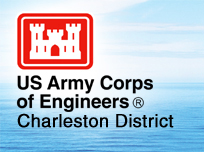Folly Beach Named One of 2007's Top Restored Beaches
The American Shore and Beach Preservation Association (ASBPA) named the top seven restored beaches for 2007. Folly Beach, South Carolina was named one of the top winners. The other six winners include: Chaland Headland Restoration Project in Louisiana; East Beach, Norfolk, Virginia; Surfside-Sunset Beach, Orange County, California; Collier County Beaches, Florida, Perdido Pass, Alabama; and West Hampton Dunes on Long Island in New York.
“The Top Nourished Beach award was created in 2001 as a way of highlighting nourished beaches,” said Mayor Harry Simmons of Caswell Beach, North Carolina and President of ASBPA. “As Americans begin to flock to our nation’s coastline during the upcoming beach season, most beach-going Americans don’t even realize they may be enjoying a nourished beach.”
Beach nourishment began taking place in America over 40 years ago in coastal communities on the East, West and Gulf Coasts. Beach nourishment is the process of placing sufficient quantities of beach quality sand on eroding beaches to reverse or offset the effects of erosion. The United States has over 370 nourished beaches, including Miami Beach, Coney Island, Waikiki and Southern California’s Venice Beach.
Most nourishment projects are overseen by the US Army Corps of Engineers and funded with local, state and federal money. Studies have shown that for each dollar spent on beach nourishment projects four to five dollars accrue in tax payer benefits. Additional benefits also include an economic boost to the local economy which translates into more jobs and higher tax revenue for building schools and roads.
The Top Restored Beaches were chosen based upon three criteria: the economic and ecological benefits the beach brings to its community; the short and long-term success of the nourishment project and the challenges each community overcame during the course of the project.
One of this year’s winners overcame significant obstacles. The Chaland Headland Restoration Project in Louisiana was granted funds for the restoration project four days prior to the landfall of Hurricane Katrina.
“This year’s award winning beaches are a great testament to the solid science surrounding beach nourishment,” Simmons concluded.
Coastal communities were asked to nominate their restoration projects and were judged by the aforementioned criteria. Winners of the Top Restored Beach Award were selected by an independent panel of coastal managers and scientists. Past award winners include: Panama City Beach, Florida in 2002; The San Diego Association of Governments Regional Beach Sand Project in 2003; Ocean City, Maryland in 2004; The town of South Padre Island, Texas beaches in 2005; and Rehoboth and Dewey Beaches in Delaware in 2006.
















